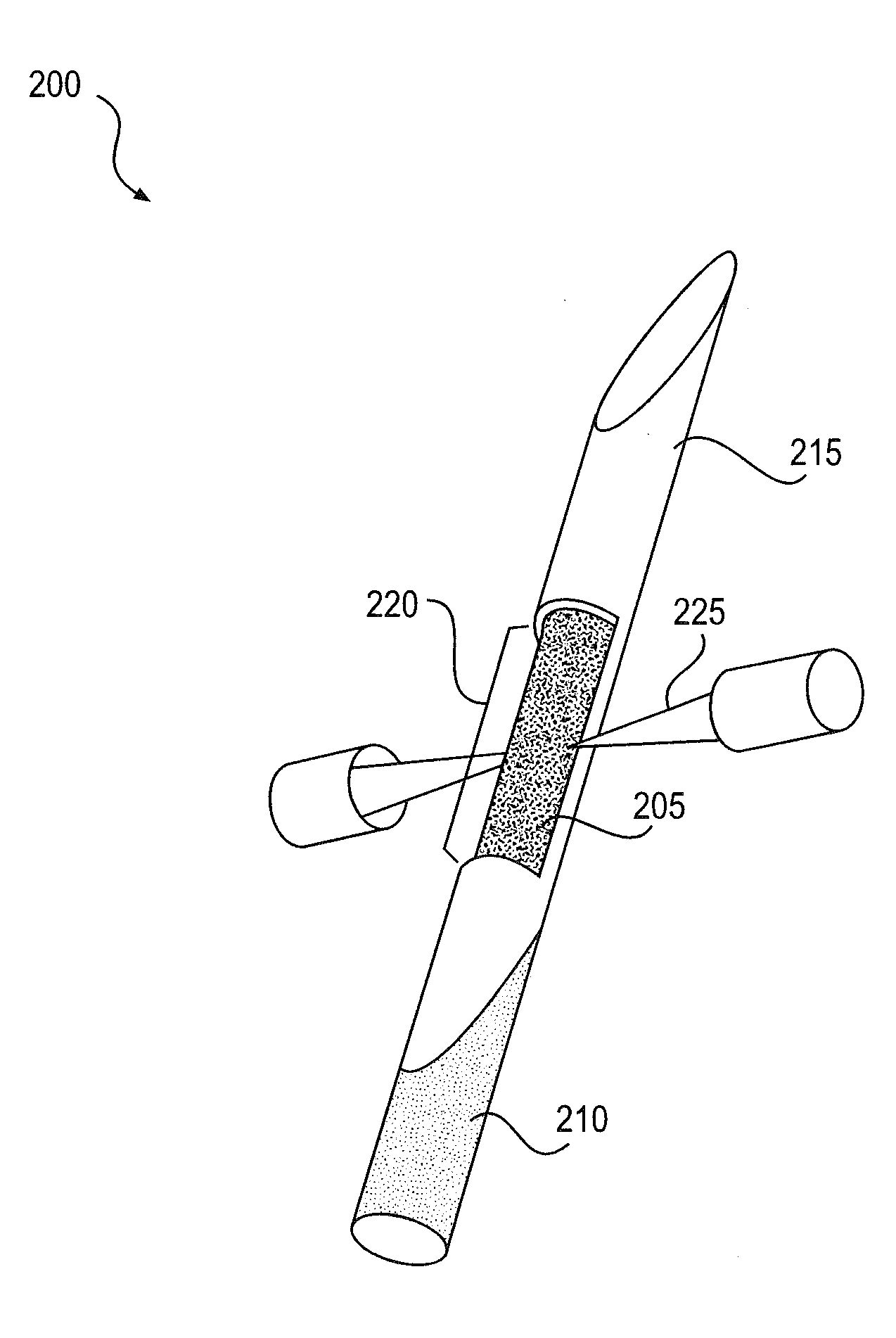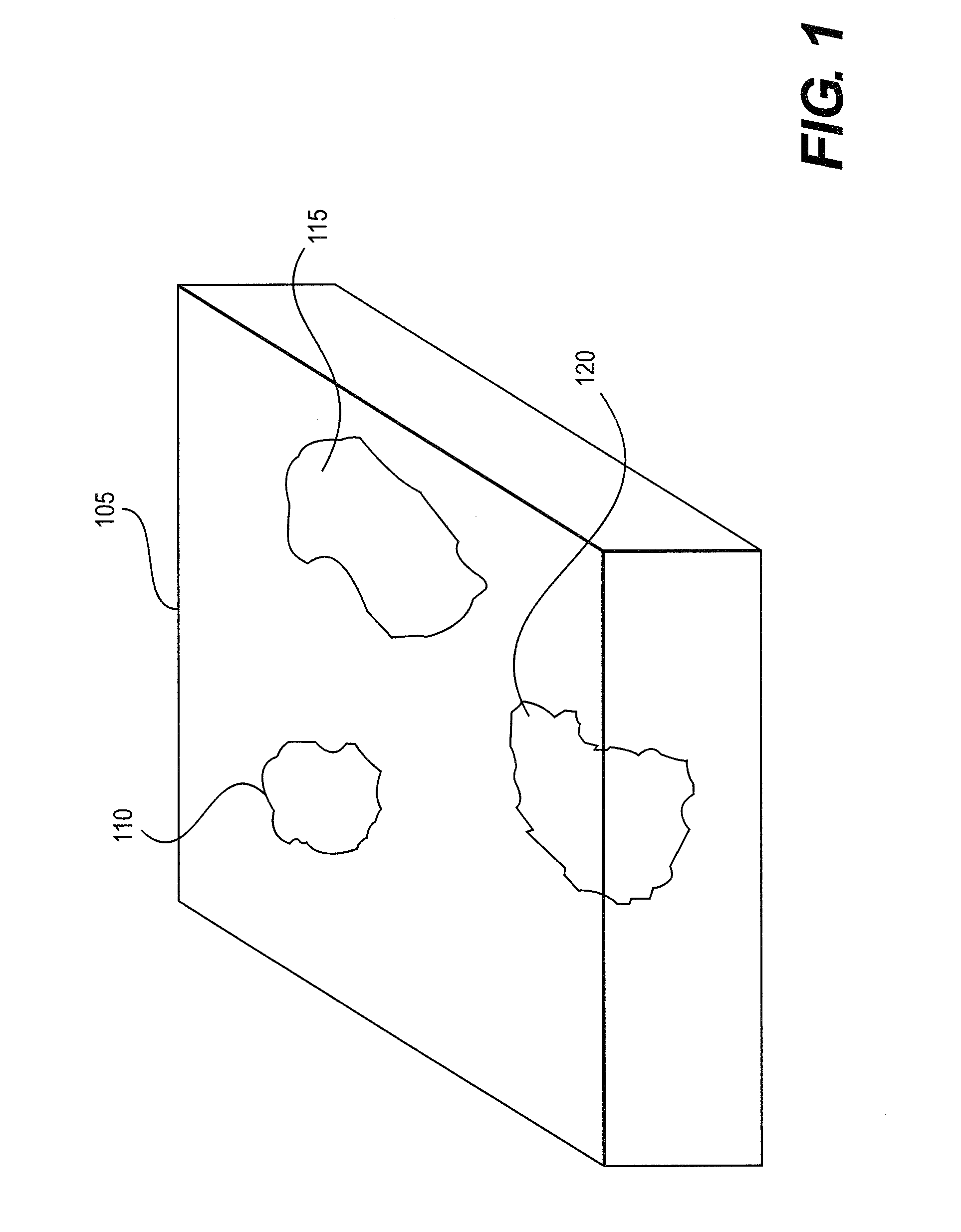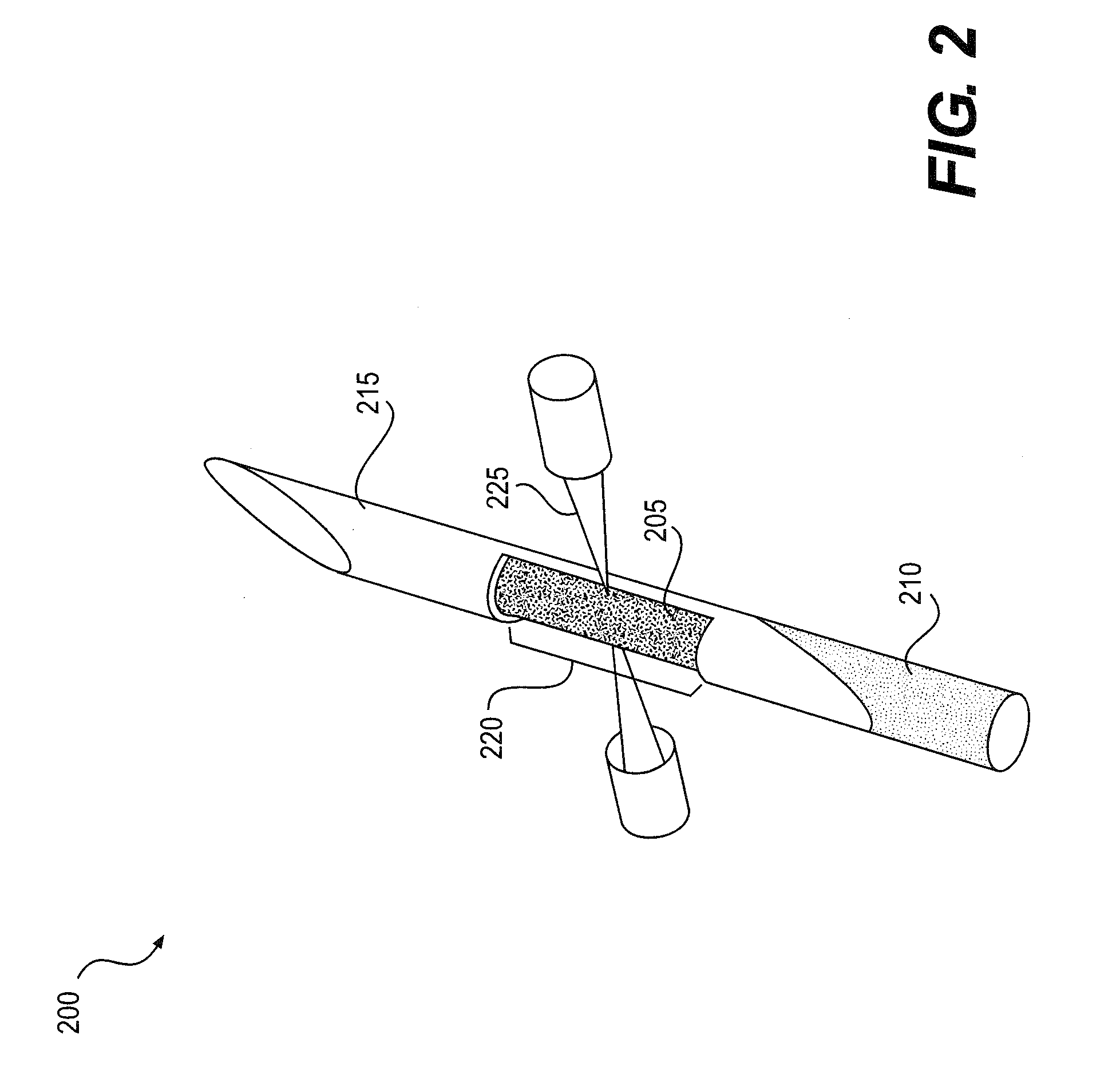System and method for providing assessment of tumor and other biological components contained in tissue biopsy samples
a tissue biopsy and tumor technology, applied in the field of biopsies, can solve the problems of less progress in optimizing the tissue acquisition process, insufficient conventional methods to ensure the success of intended molecular diagnostic tests, and insufficient standard approaches to on-site biopsy screening
- Summary
- Abstract
- Description
- Claims
- Application Information
AI Technical Summary
Benefits of technology
Problems solved by technology
Method used
Image
Examples
Embodiment Construction
[0007]An exemplary system, method and computer-accessible medium can include, for example, receiving information related to a scan(s) of a three-dimensional structure(s) containing a first tissue(s) and a second tissue(s), and providing the information to a system for identifying respective tissue types of the first tissue(s) and the second tissue(s). The structure(s) can be scanned to generate the information. The structure(s) can include a paraffin block(s). The first tissue(s) or the second tissue(s) can be excised. The tissue types can include a cancerous tissue and a non-cancerous tissue, and the first tissue(s) can be identified as the cancerous tissue and the second tissue(s) can be identified as the non-cancerous tissue. Further information from the system can be received which can include an identification of the tissue type of the first tissue(s) and the second tissue(s). The scan(s) can be a three-dimensional scan of the three-dimensional structure(s), which can be perfor...
PUM
| Property | Measurement | Unit |
|---|---|---|
| wavelengths | aaaaa | aaaaa |
| oblique angle | aaaaa | aaaaa |
| structure | aaaaa | aaaaa |
Abstract
Description
Claims
Application Information
 Login to View More
Login to View More - R&D
- Intellectual Property
- Life Sciences
- Materials
- Tech Scout
- Unparalleled Data Quality
- Higher Quality Content
- 60% Fewer Hallucinations
Browse by: Latest US Patents, China's latest patents, Technical Efficacy Thesaurus, Application Domain, Technology Topic, Popular Technical Reports.
© 2025 PatSnap. All rights reserved.Legal|Privacy policy|Modern Slavery Act Transparency Statement|Sitemap|About US| Contact US: help@patsnap.com



